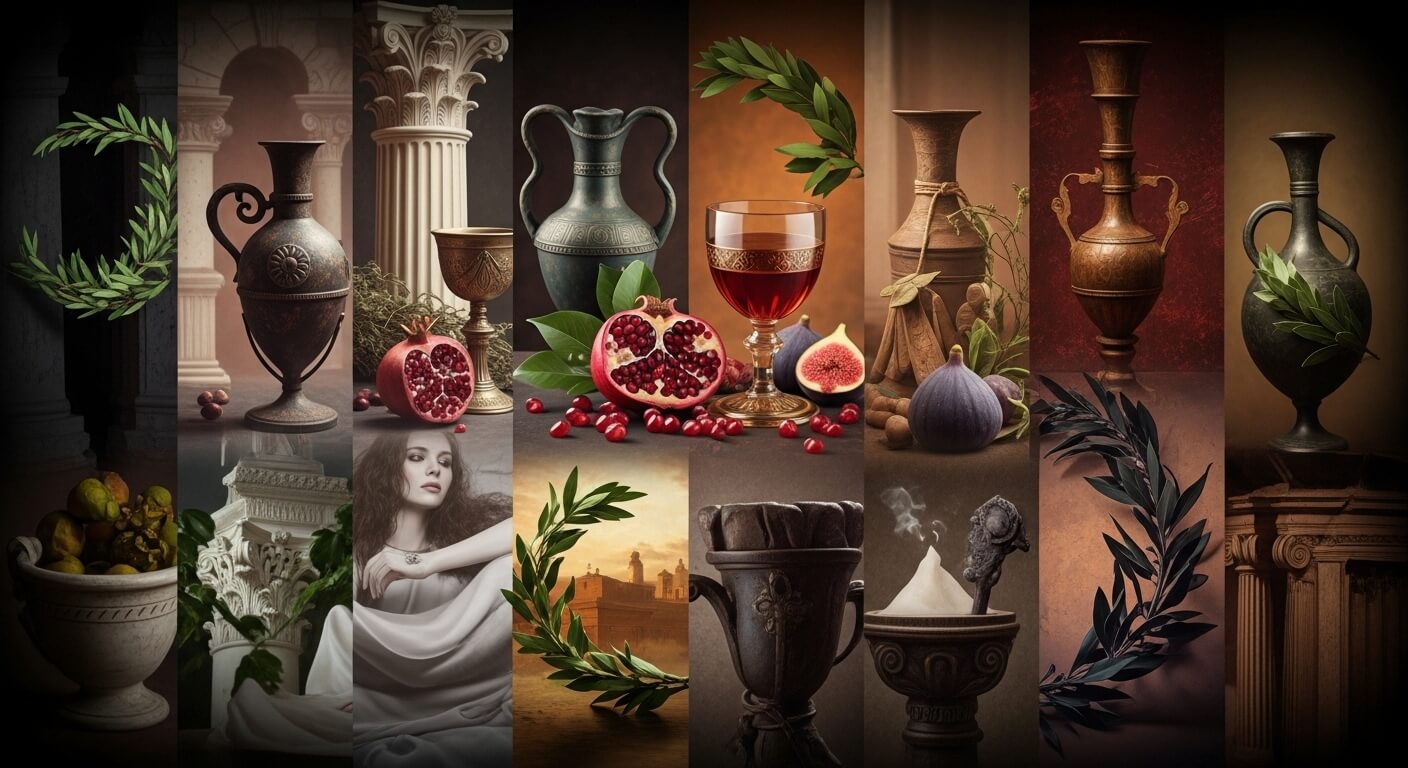The desire to capture affection and inspire passion is as old as humanity itself. Long before the advent of modern chemistry, ancient Greeks and Romans concocted a vast and inventive array of “love potions” and aphrodisiacs, drawing on mythology, botany, and a healthy dose of hope.[50], [53]
The very word “aphrodisiac” comes from Aphrodite, the Greek goddess of love, who was said to have been born from the sea and carried to shore on a scallop or oyster shell.[50], [51], [52], [45] It’s no surprise, then, that oysters were a popular choice, seen as a fleshy symbol of the goddess herself.[50], [51], [24]
But the ancient pharmacopeia of passion went far beyond shellfish. Romans and Greeks sought to enhance their romantic encounters with a variety of ingredients, often mixed into wine, the ultimate social lubricant [50], [22], [45]:
- Herbs and Roots: The mysterious satyrion, likely a type of orchid, was named for the mythical, randy satyrs and was believed to be a potent stimulant when added to wine.[50], [45], [53]
- Fruits and Spices: Pomegranate juice, from Aphrodite’s favorite tree, was a popular choice, as were saffron and various mushrooms and truffles, whose musky aroma was thought to mimic the body’s natural chemical attractants.[50], [45]
- The Bizarre and Painful: Not all remedies were pleasant. One of the most infamous ingredients was the cantharides beetle, or “Spanish fly,” which was known to be a painful irritant.[50] More bizarre concoctions included bat’s blood and crushed beetles.[22]
Of course, what could be inflamed could also be extinguished. The ancients also had a list of “anti-aphrodisiacs” to curb unwanted desire. Surprisingly, fresh lettuce was believed to have an “erection-withering” effect, leading Roman men to carefully pair it with aphrodisiacally active arugula to neutralize its power.[50], [51], [24]
While these ancient remedies may seem strange to us today, they reveal a timeless human fascination with the chemistry of attraction. They represent the first steps in a long journey to understand and influence the powerful forces of love and desire—a journey that continues in modern science labs today.


Leave a Reply